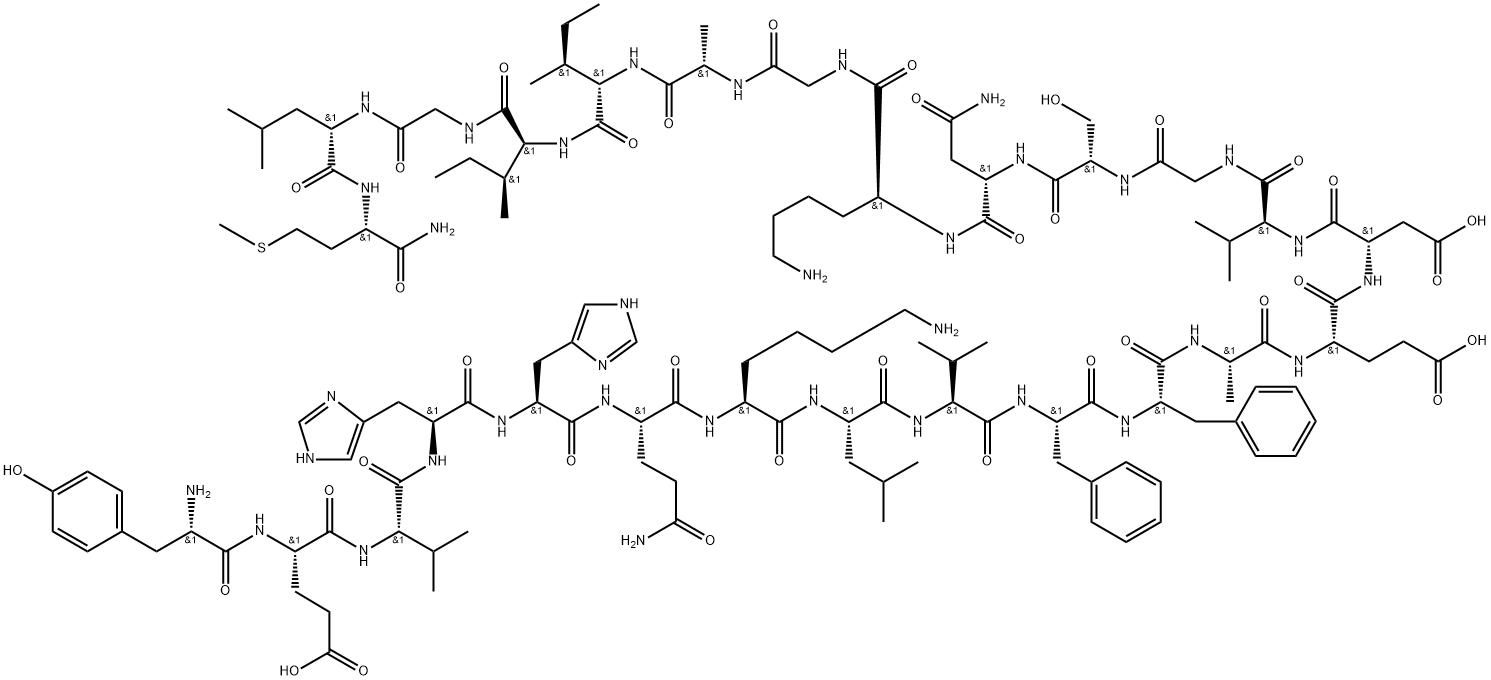181427-66-7
 181427-66-7 結(jié)構(gòu)式
181427-66-7 結(jié)構(gòu)式
| 報價日期 | 產(chǎn)品編號 | 產(chǎn)品名稱 | CAS號 | 包裝 | 價格 |
| 2023/03/20 | HY-P1567 | β-Amyloid (10-35), amide β-Amyloid (10-35), amide | 181427-66-7 | 1mg | 1000元 |
| 2023/03/20 | HY-P1567 | β-Amyloid (10-35), amide β-Amyloid (10-35), amide | 181427-66-7 | 5mg | 3300元 |
| 2023/03/20 | HY-P1567 | β-Amyloid (10-35), amide β-Amyloid (10-35), amide | 181427-66-7 | 10mg | 5200元 |
常見問題列表
β-Amyloid (10-35) is selected based on the following considerations: (1) β-Amyloid (10-35) incorporates the core region, point mutations of which significantly obstruct fibril formation and have been used to generate inhibitors of fibrillogenesis; (2) β-Amyloid (10-35) retains the ability to add to bona fide Alzheimer’s plaques, in contrast to other truncated peptides, and forms fibrils morphologically similar to those of the full length peptide; (3) Of most importance, the full length peptide, Aβ (1-42) , is intractable for the controlled formation of fibrils from aqueous media because at the earliest time points, some of the peptide exists as an amorphous precipitate. In contrast, the use of β-Amyloid (10-35) allows the reproducible and controlled formation of fibrils from aqueous solutions, under defined conditions of pH, ionic strength, and peptide concentration and thus yields the required homogeneous fibrils.